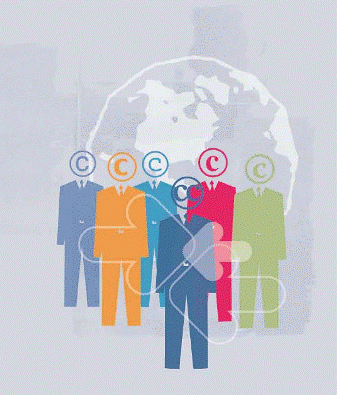There are two types of decisions, programmed and non-programmed, so for that reason there is a decision-making process that help us to follow the right steps to take a decision:
· Recognize the problem and the need for a decision
· Identify the objective of the decision
· Gather and evaluate data and diagnose the situation
· List and evaluate alternatives
· Select the best course of action
· Implement the decision
· Gather feedback
· Follow up
There are three Models of decision making:
· Rational Model: Describes how individuals should behave in order to optimize some outcome.
· Bounded rationality Model: A theory that suggests that there are limits upon how rational a decision maker can actually be.
· Garbage can Model: A theory that contends that decisions in organizations are random and unsystematic.
Managers have to assume risks in their jobs and they can be risk aversion or risk takers. The escalation of commitment is a tendency to continue to commit resources to a failing course of action.
In the decision making process there are individual and group decisions.
· The individual differences to affect decision making are intuition and creativity. Creativity is highest when there is a match between individual and organizational influences on creativity. There are mental blocks that diminish creativity such as: Avoiding ambiguity, striving for practicality, being afraid to look foolish.
· The participative decision making is the one in which individuals who are affected by decisions influence the making of those decisions.
Groupthink (Irving Janis): Is a deterioration of mental efficiency, reality testing, and moral judgment resulting from pressures within the group. Some of the consequences are: Biased information processing, failure to work out contingency plans and incomplete survey of alternatives.
There are some techniques for group decision making:
· Brainstorming
· Nominal Group Technique (NGT)
· Delphi Technique
· Devil’s Advocacy
· Dialectical Inquiry
Ethical Theories:
· Consequential Theory: An ethical theory that emphasizes the consequences or results of behavior.
· Rule-based Theory: An ethical theory that emphasizes the character of the act itself rather than its effects.
· Character Theory: An ethical theory that emphasizes the character, personal virtues, and integrity of the individual.
The Ethical Behavior consists of acting in ways consistent with one’s personal values and the commonly held values of the organization and society. It has individual influences such as: Values systems, Locus of control, Machiavellianism and Cognitive moral development.
One quality required for ethical decision making is the self-confidence to seek out different opinions about the issue and decide what is right in terms of a situation.
How can organizations effectively manage both risk taking and escalation of commitment in the decision-making behavior of employees?
Organizations can manage risk taking and escalation of commitment in the decision-making behavior of employees in a direct relation of both (the highest risk, the highest commitment and to lowest risk, the lowest commitment), with this technique managers allow employees to take decisions by themselves and to fail without fear of punishment when there is high risk- taking behavior, also it is a good characteristic because it is open to creativity and innovation. The level of sunk cost that makes escalations of commitment occurs and the risk perception that employees and managers have, contribute significantly to their willingness to continue a project.
The decision making behavior of employees is influenced by individual and group factors, for that reason it is important to split responsibilities for decisions, motivate them to be committed and allow them to be creative.
BIBLIOGRAPHY
· Mintzberg, H. & Westley, F. (2001, Spring). Decision making: It’s not what you think. MIT Sloan Management Review, 42(3), 89 –93.
· Nelson, D.L. & Quick, J.C. (2010) Organizational Behavior: Science, The Real World and You. South-Western College Publication, 7th. Ed.
· Wong, K. F. E., & Kwong, J. Y. Y. (2007). The role of anticipated regret in escalation of commitment. Journal of Applied Psychology, 92, 545–554.
· Keil, Mark; Tan, Benard C. Y; Wei, Kwok-Kee; Saarinen, Timo; Tuunainen, Virpi; Wassenaar, Arjen. A CROSS-CULTURAL STUDY ON ESCALATION OF COMMITMENT BEHAVIOR IN SOFTWARE PROJECTS. MIS Quarterly; Jun2000, Vol. 24 Issue 2, p299-325, 27p, 7 Diagrams.
· De Cremer, David; M Mayer, David; Schminke, Marshall. Guest Editors' Introduction. On Understanding Ethical Behavior and Decision Making: A Behavioral Ethics Approach. Business Ethics Quarterly; Jan2010, Vol. 20 Issue 1, p1-6, 6p.
Image: http://roberto-luna.blogspot.com/2009_03_01_archive.html
Image: http://roberto-luna.blogspot.com/2009_03_01_archive.html


No hay comentarios:
Publicar un comentario